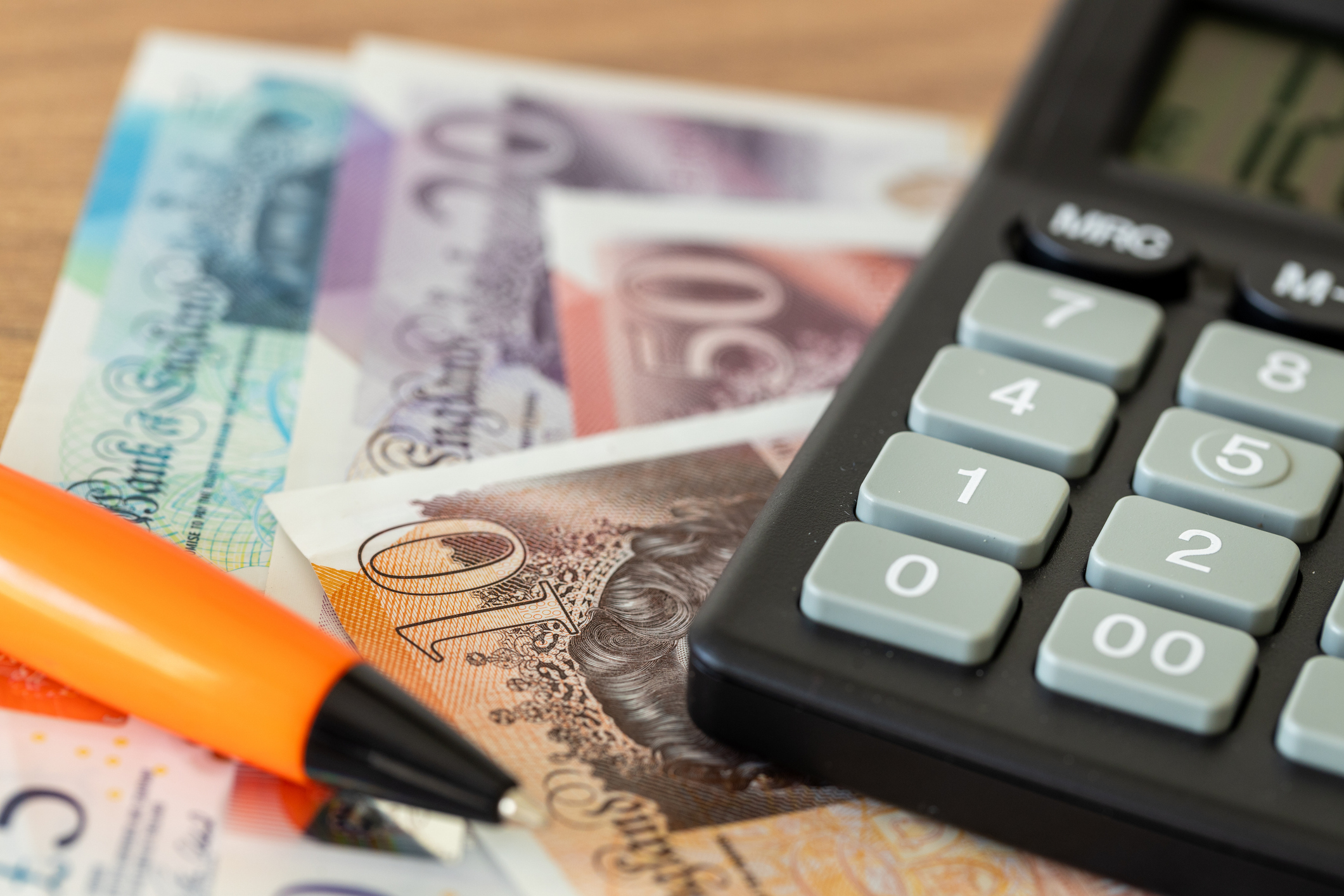The “wait-and-see” savings mistake to avoid: Savers urged to fix now and earn £624 extra interest
Some savers are waiting for savings rates to rise before moving to a fixed-rate account. But this could cost you hundreds


It can be confusing trying to predict whether savings rates will rise or fall this year.
The Bank of England opted to keep the base rate at 4.25% earlier this month. Meanwhile, some savings rates have edged up while others have fallen.
Behind the scenes, there’s a range of “push-me-pull-you” forces, which dictate what the Bank - and savings providers - will do next. On one hand, the Bank could cut interest rates in a bid to boost economic growth.
MoneyWeek
Subscribe to MoneyWeek today and get your first six magazine issues absolutely FREE

Sign up to Money Morning
Don't miss the latest investment and personal finances news, market analysis, plus money-saving tips with our free twice-daily newsletter
Don't miss the latest investment and personal finances news, market analysis, plus money-saving tips with our free twice-daily newsletter
But, banks and building societies are also influenced by bond yields - and when they rise, which they did recently, so do savings rates.
Add in the Trump tariffs and geopolitical tensions, such as between Israel and Iran, and it’s unclear how the UK economy will fare this year, and which way savings rates might move.
Sarah Coles, head of personal finance at Hargreaves Lansdown, says the fact there’s no clear direction for savings rates risks “sparking a wave of wait-and-see savers”.
She warns that waiting to move your money to a fixed-rate account could cost savers £624 in lost interest.
Savers also need to beware of sitting on rock-bottom rates from the UK’s biggest banks, and be prepared to switch.
Analysis from Moneyfactscompare.co.uk found that the five largest banks - Barclays, HSBC, Lloyds Bank, NatWest and Santander - are paying less than 1.5% on their most flexible easy-access savings accounts. This compares to a market average of 2.74%, and 4.5% for the best rates on the market.
The comparison site also says that loyal savers have endured three years of poor interest rates on accounts that have been closed to new customers - meaning it really does pay to switch to a new savings account.
More than half of people (55%) don’t expect to switch their savings in the next 12 months, with one in ten saying it’s because they’re waiting for savings rates to rise, according to a survey by Hargreaves Lansdown.
“This is unfortunately a fundamentally flawed approach. Not only are there no guarantees that savings rates will rise, but there’s a real cost to waiting,” comments Coles.
The “wait and see” savings mistake
Coles says the current state of the savings market - and events happening around the world - mean some customers are just going to “wait and see” before moving their cash to an account with a decent interest rate.
“There are some signs that over time we can expect savings rates to fall. GDP figures for the UK showed the economy shrank 0.3% in April – and unemployment figures rose to their highest level in four years. In this environment, there’s a chance the Bank of England will be more concerned about economic growth than the risks of inflation, and will cut rates,” she notes.
“However, on the flip side, bond investors have been reacting to President Trump’s tax bill and the downgrading of the US credit rating by Moody’s, so bond yields have been fluctuating. These are used to price savings accounts in the swaps market, which means any time they rise, so do savings rates. It’s why some rates bumped up last week.”
Coles warns that the majority of savers have their money in easy-access accounts with high-street giants, “where they’re often making less than half the best easy-access rate on the market – and far less than a decent fixed rate”.
She argues that if you’re happy to tie up your money for a year, it’s better to do it now, even if fixed savings rates do rise in future.
Coles gives the following example. If you have £30,000 in an easy-access account earning 1.05%, and wait for six months to see what happens, over that period you will earn £158 in interest. If the best fixed rate on the market rises from 4.5% to 5%, and you then fix for a year, after 18 months you’ll have £31,700. If the best rate on the market actually falls to 4%, you’ll end up with £31,387.
If, by contrast, you fix now at 4.5%, after a year you’d have £31,378. If you then switched into a competitive easy-access rate for six months, you might make 4% for six months and end up with £32,011 in total. Or if you secure a 5% easy-access rate, you’d finish with £32,171.
“It means that if rates fall in six months, by fixing now you might be £471 better off. If they rise in six months’ time, by fixing now you could actually be £624 better off. Whatever happens to rates, in these scenarios you will always be better off fixing now at the best possible rate than hanging on in a dismal high-street savings account,” says Coles.
It’s perhaps similar to homeowners who think they will stay on a variable-rate mortgage, and move to a fixed deal once mortgage rates drop further. But, if the variable mortgage is expensive, it could be better to switch to a fixed rate now and cheaper in the long run - even if fixed mortgage rates tumble later.
Customer loyalty doesn’t pay - switch to a better account
As well as the “wait and see” savings mistake, savers should also be careful not to fall into the trap of thinking customer loyalty will pay. Or, that the big, well-known banks will pay a competitive interest rate.
Over the past three years (June 2022 to June 2025), the biggest gap between the average easy-access “closed” and “live” rate, was in October 2023 at 0.66% (2.52% versus 3.18%), according to Moneyfactscompare.
Closed means the account is now closed to new customers, while a live account is one that is open to new customers.
The average gap has now shrunk to 0.05%, due to savings rates falling generally, and also Consumer Duty rules, which state that financial companies must treat customers fairly.
But, some banks have bigger gaps. For example, Santander’s closed Everyday Saver only pays 1.00%, versus 1.2% on the live account.
Rachel Springall, finance expert at the comparison site, insists that savers must be prepared to transfer their cash to get the best deals.
“Savers who don’t review and switch from their closed easy-access accounts have been getting short-changed for too long. It really does come down to savers moving their money proactively.”
She adds: “Savers who only have small pots might feel there isn’t enough incentive to switch, but there will also be loyal customers under the assumption that they are getting a fair return on their hard-earned cash. Any indifference about moving pots is dangerous, particularly when inflation erodes the real return on savers’ hard-earned cash.
“Savers need to look beyond the most prominent brands, as challenger banks and mutuals are working much harder to entice deposits.”
The best one-year fixed deal is currently 4.55% with Cynergy Bank. The best easy-access account is the Chase Saver With Boosted Rate, at 5%.
Consider a cash ISA
Savers are continuing to pile money into cash ISAs, with £3.9 billion paid into the tax-free accounts in May, according to the latest Bank of England data.
This is down from the £14 billion cash ISA deposits during the previous month, however, April normally records a much higher figure as it marks the end and start of the tax year.
It’s a sizeable amount, and continues a trend of savers rushing to utilise their cash ISAs while a question mark hangs over the future of the products. Chancellor Rachel Reeves has said she wants to reform ISAs to encourage more people to invest and boost the UK economy.
In March, savers paid £4.2 billion into their cash ISAs.
If you’re concerned about paying tax on savings interest, the simplest thing to do is move your savings into a cash ISA. You can choose between easy-access ISAs and fixed-rate ISAs.
We have lots more information about whether you have to pay tax on your savings - and ways to avoid it - in Beware the savings tax trap.
Get the latest financial news, insights and expert analysis from our award-winning MoneyWeek team, to help you understand what really matters when it comes to your finances.

Ruth is an award-winning financial journalist with more than 15 years' experience of working on national newspapers, websites and specialist magazines.
She is passionate about helping people feel more confident about their finances. She was previously editor of Times Money Mentor, and prior to that was deputy Money editor at The Sunday Times.
A multi-award winning journalist, Ruth started her career on a pensions magazine at the FT Group, and has also worked at Money Observer and Money Advice Service.
Outside of work, she is a mum to two young children, while also serving as a magistrate and an NHS volunteer.
-
 Revealed! The most viewed properties on Rightmove amid Boxing Day boost
Revealed! The most viewed properties on Rightmove amid Boxing Day boostThe property website predicts that the housing market is set for a busy 2026 based on user activity over the festive period. Here are the most viewed homes on Rightmove during Boxing Day
-
 ISS backs Edinburgh Worldwide’s board as Saba questions SpaceX selloff
ISS backs Edinburgh Worldwide’s board as Saba questions SpaceX selloffShareholder advisor ISS has recommended that shareholders vote against Saba’s proposals to replace the board of the Baillie Gifford-managed investment trust